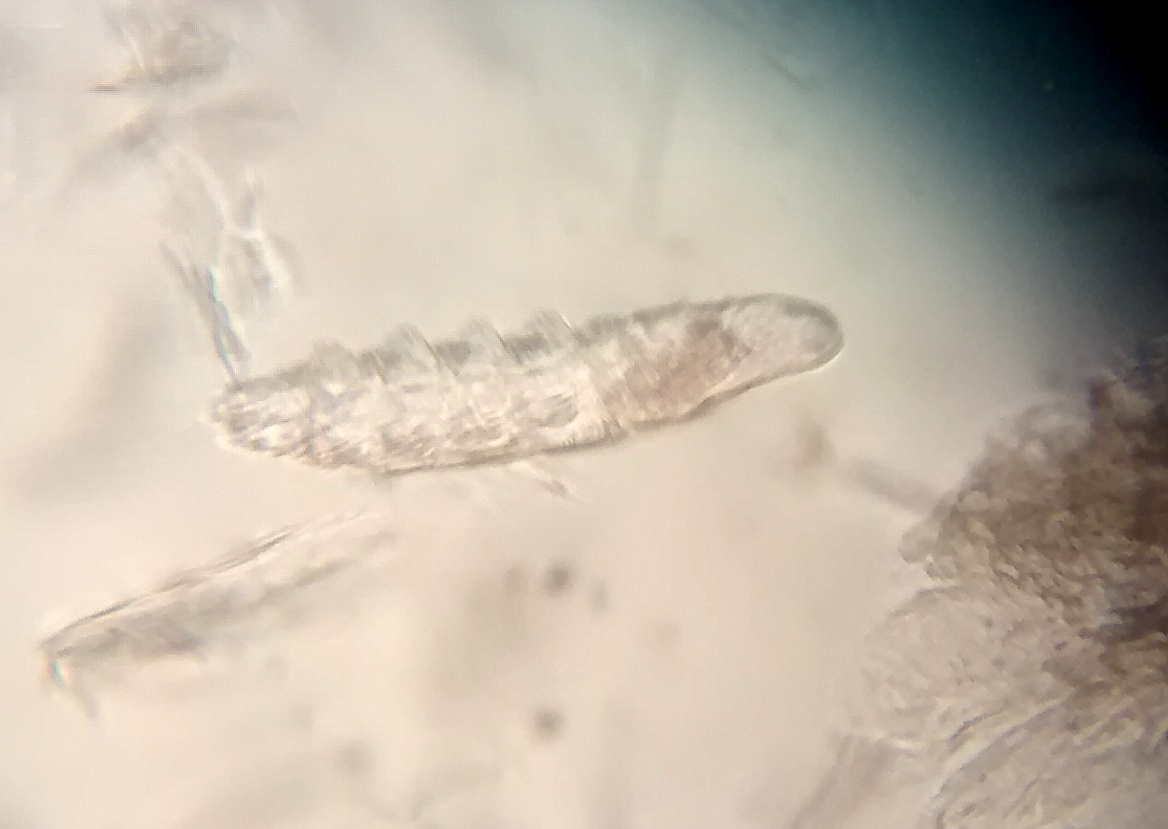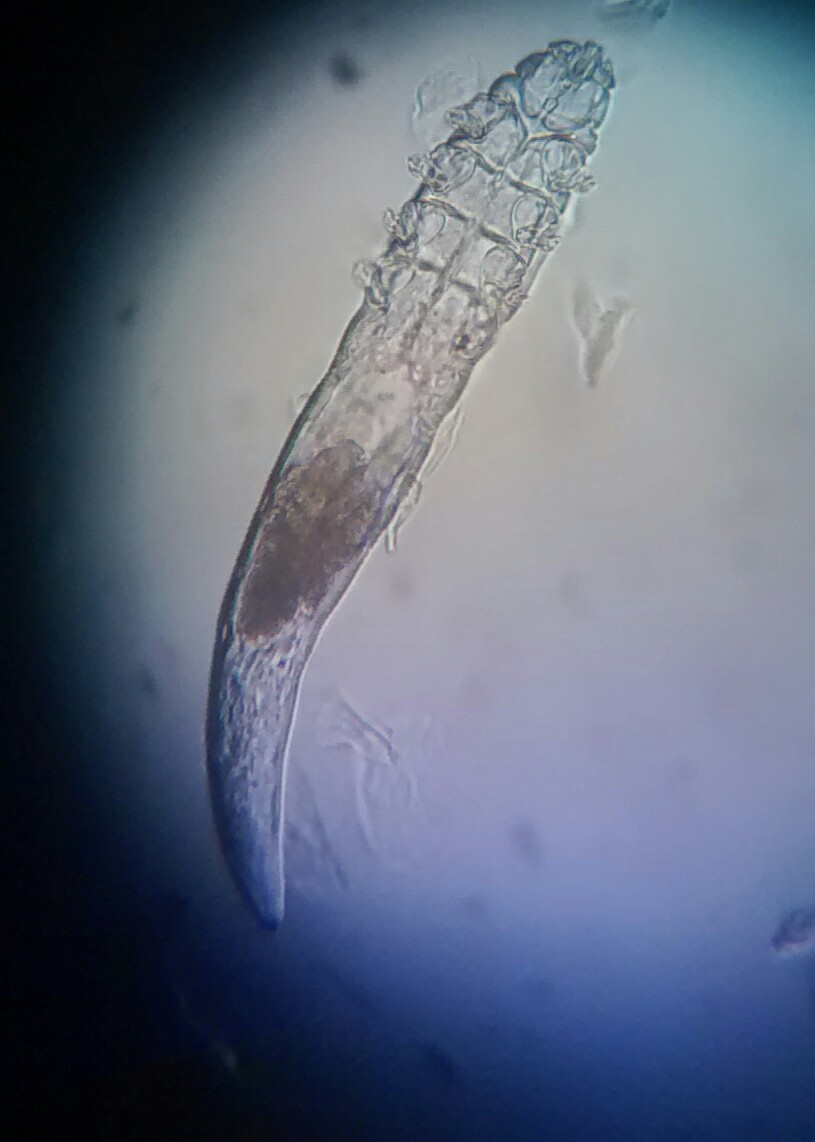more on the subject of canine Demodex
Continuing with demodicosis: most host species seem to carry two or three forms of this mite. In dogs, the long-bodied form D.injae inhabits the sebaceous glands and is associated with dorsal seborrhoea in terriers which is often pruritic. The ‘normal’ form D. canis spends most time lying in the hair follicles and the short-bodied (as yet un-named) variety can be found in the superficial stratum corneum.
The latter two are often found co-habiting in typical localised or generalised demodicosis cases and, although this is interesting, treatment options and prognosis remain the same as for pure D.canis infestations -as far as we know. However, there are now a few reports of dogs bearing predominantly short-form mites. Some of these have been scaly/’dandruffy’ and pruritic (rather than the typical crusty/alopecic lesions of typical demodex).
This photo is of a short-bodied mite from an adolescent Retriever with a history of stubborn dandruff over several months. Eventually, he developed a typical alopecic patch with comedomes from which we scraped a mixture of short and normal Demodex mites. On treatment, not only did the patch resolve -also the dandruff. Not conclusive, but it seems possible that demodicosis may have been a factor in his scaling condition.
Total body length does not seem to be a conclusive distinguishing feature for short-bodied Demodex in dogs. However, the rounded tip of the abdomen and the ratio of body to abdomen in adult mites (as seen here) are usually clearly discernible.
A normal D. canis adult for comparison.
It is also worth mentioning that, since Aludex is currently unavailable and Pro-meris Duo has been withdrawn, I think that Certifect (amitraz) spot-on may have become the cascade treatment of choice. Monthly (as per label) dosing appears to be effective in most cases. Although Advocate is licensed for demodicosis in dogs it is most effective when used at off-label frequencies. Ivermectin and moxidectin are obviously unlicensed for canine use -although their use can be justified when other measures fail. Testing for MDR-1 gene presence may be advisable when using off label macrocyclic lactones.







